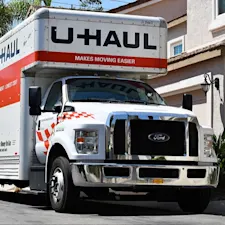
Too Old to Serve Time? The Debate Over Elderly Inmates
The prison population in the United States is aging rapidly, with a significant number of older individuals now navigating incarceration. This trend raises important questions about how prisons are equipped to handle the unique needs of senior inmates, the societal factors contributing to this demographic shift, and the moral and financial implications of incarcerating the elderly.
The Aging Prison Population
America's prison population has seen a dramatic increase in the number of elderly inmates over the past few decades. Older adults now comprise five times more of the prison population than they did three decades ago. Between 1991 and 2021, the percentage of state and federal prisoners aged 55 and older grew from 3% to 15%. This shift is even more pronounced among those serving life sentences; by 2020, 30% of individuals serving life sentences were at least 55 years old, with over 61,400 older adults sentenced to spend the remainder of their lives in prison.

Factors Contributing to the Aging Population
Changes in sentencing policies from the 1970s to the 2000s have significantly contributed to the rise in elderly inmates. Laws enacted during this period imposed longer sentences through measures like mandatory minimums, "three strikes" laws, and truth-in-sentencing policies that require individuals to serve the majority of their sentences before parole eligibility. Some states also abolished parole and reduced time credits for good behavior, further extending incarceration periods. These "tough on crime" laws led to a surge in the prison population during the 1990s and 2000s, with many individuals now aging behind bars decades later.
Health and Medical Challenges
Senior inmates often face significant health challenges. Many enter prison with pre-existing conditions such as diabetes, heart disease, and mobility issues. Others develop age-related illnesses like dementia while incarcerated. The healthcare infrastructure within prisons is designed primarily for younger, healthier populations, leading to substandard care and heightened medical complications for older inmates.
Older adults in prison have proven to be fatal: between 2001 and 2018, more than 30,500 incarcerated individuals aged 55 and older passed away, with nearly 97% of these deaths attributed to illnesses.
The Financial Strain of Housing Elderly Inmates
The financial burden of incarcerating older adults is substantial. In 2013, the Federal Bureau of Prisons (BOP) allocated 19% of its total budget — amounting to $881 million — to cover the costs associated with incarcerating elderly individuals. That same year, the BOP identified older adults as the fastest-growing segment of the inmate population, with a 25% increase in their numbers compared to the previous year, even as the overall prison population declined by 1%.
To address these challenges, the BOP implemented the Elderly Offender Program (EOP), which aims to reduce the number of elderly inmates through measures like home confinement and other alternatives to incarceration. The program focuses on individuals who pose little risk to society, allowing them to serve the remainder of their sentences outside traditional prison settings. Such initiatives help mitigate the financial and healthcare burdens of housing older inmates while providing a more humane approach to their rehabilitation and reintegration. However, the EOP came to an end in September 2023, leaving many advocates calling for its renewal to continue addressing these pressing issues.
Alternatives to Incarceration
As the number of elderly prisoners grows, there is increasing discussion about alternatives to incarceration for older individuals. Compassionate release programs, for example, allow terminally ill or severely incapacitated inmates to spend their final days outside prison. However, these programs are often underutilized due to bureaucratic hurdles and restrictive eligibility criteria.

Elder parole policies, which automatically consider older adults for parole after serving a portion of their sentence, present another solution. These policies streamline the process for medically vulnerable individuals to leave prison, potentially reducing the number of older people behind bars.
Another option is home confinement, which can significantly reduce costs while addressing public safety concerns. Such measures could provide a more humane approach to justice for aging offenders while alleviating the burden on the prison system.
According to The Bureau of Justice Statistics, people released at age 65 or older have some of the lowest rates of re-arrest, re-conviction, and re-incarceration, highlighting the need for policymakers to reconsider sentencing for senior inmates.
Reevaluating the Purpose of Punishment for Seniors
The growing number of elderly inmates presents a significant challenge for the U.S. justice system. As prisons struggle to accommodate the medical and financial needs of this demographic, it becomes imperative to reassess the purpose of keeping terminally ill or "low risk to society" senior incarcerated. Alternatives such as compassionate release, elder parole policies, and home confinement offer practical solutions to address these challenges while promoting a more humane and cost-effective justice system.
References: Old And Facing Federal Prison | The aging prison population: Causes, costs, and consequences























